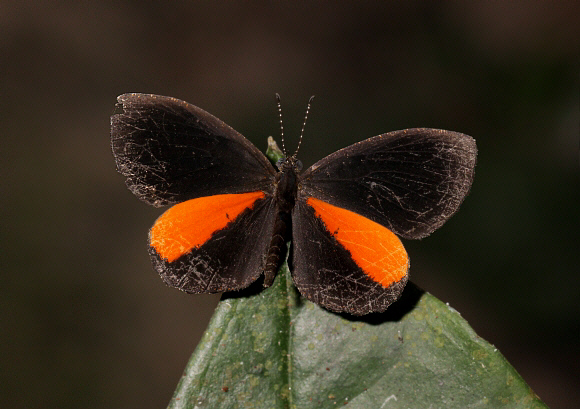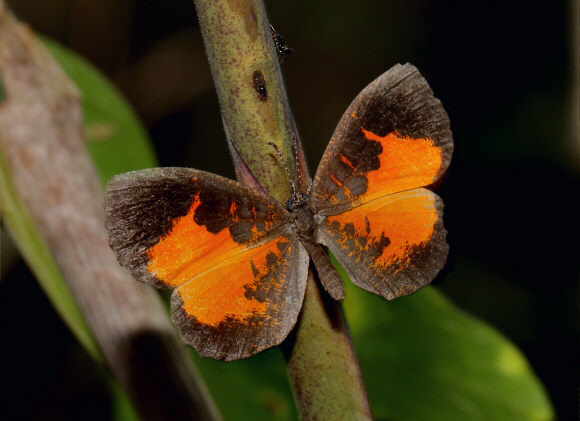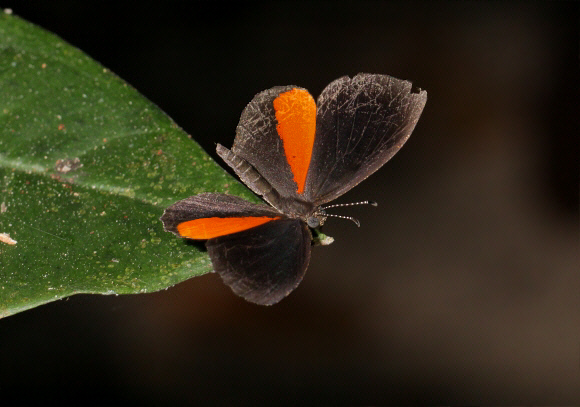
Introduction
The subfamily Lipteninae is wholly African in distribution, and comprises of no less than 600 species, varying from the tiny Eresiomera bicolor to the dazzling bright metallic blue Epitola posthumus – a species which with a wingspan of 65mm is massive by Lycaenidae standards.
The Lipteninae are fascinating because of their association with ‘ant trees’, i.e. trees which support colonies of Crematogaster ants. In common with other Lycaenidae the larvae of Liptenids have ants in almost constant attendance. The ants milk a sugary substance from a gland on the larva’s back. The presence of the aggressive ants is beneficial for the larvae because they deter parasitoid wasps and flies that would otherwise attack them.
Eresiomera comprises of 13 West African butterflies which are included by some writers within the genus Pseuderesia, but which differ from it regarding wing shape, underside pattern, genitalia and behaviour. The popular name Pearly applied to Eresiomera species refers to the pearly-grey lustre on the underside hindwings.
Eresiomera bicolor is one of the commonest of the Lipteninae, and is found from Cote d’Ivoire to western Nigeria.

Habitats
This is a rainforest species, found at altitudes up to about 500m.

Lifecycle
The larvae browse on the trunks of ‘ant-trees’, which can be any one of a number of species from different plant families. There is conjecture about what exactly it is that the larvae feed on. Some consider them to feed on lichens, while others insist it is blue-green algae. It may even be the case that they feed on microscopic fungi, and it is possible that ants play a part in cultivating these fungi. The pupa is attached by the cremaster to a tendril or thin twig on the tree.

Adult behaviour
Neither sex ever seems to stray more than a few metres away from an ant-tree, around which they constantly flutter. During periods of cloud cover they settle at the tips of leaves, often quite high up, holding their wings erect, and tilting slightly forward. When the sun breaks through the clouds they slowly open their wings and bask until their body temperature is high enough to allow them to resume flight.
Both sexes commonly feed at extrafloral nectaries on the stems of Marantaceae. When nectaring in the presence of ants, or either sex of their own species, they periodically invert their wings, holding them so that the forewing apices almost meet below them. After 3 or 4 seconds the wings are then returned to the erect position. Several butterflies of both sexes commonly gather together at these nectaries. They seem intolerant of each other as well as of ants, and behave in a nervous and very agitated manner, running backwards down stems, or scurrying around them while rapidly flicking their wings open and shut.

